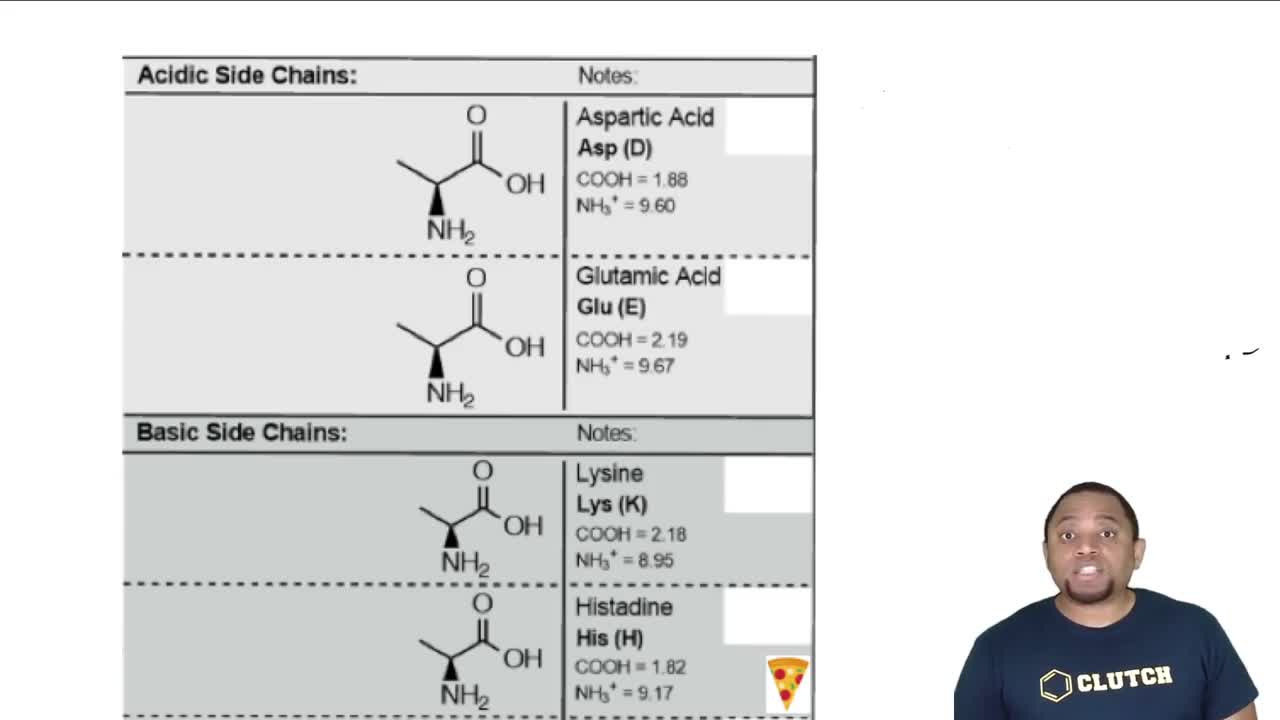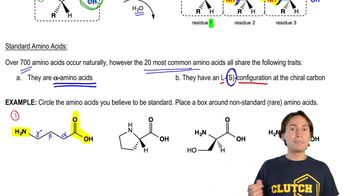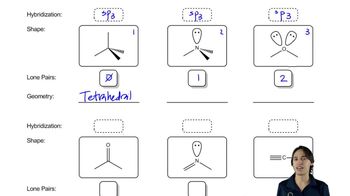An opioid pentapeptide has the following structure: Tyr-Cys-Gly-Phe-Cys
a. Draw the structure of the pentapeptide including all the side chains.
b. Write its structure following mild oxidation.
 Verified step by step guidance
Verified step by step guidance Verified video answer for a similar problem:
Verified video answer for a similar problem:



 5:09m
5:09mMaster Representations of L-Configuration with a bite sized video explanation from Johnny
Start learning